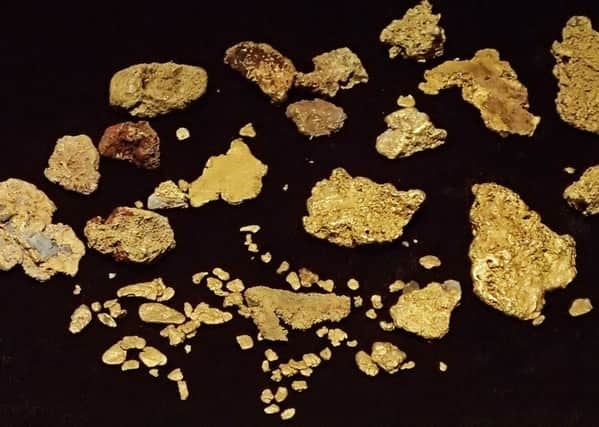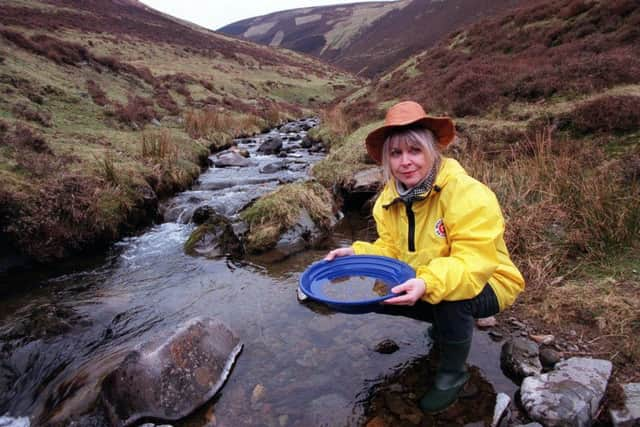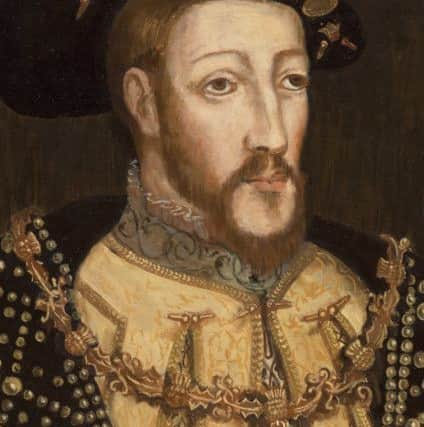When gold worth £1bn was found in Scotland


From the £1bn worth of gold discovered in the south of Scotland during the early 1500s to the gold rush of Helmsdale 350 years later, great riches have been plucked from the country’s valleys and streams.
Scotland’s search for gold intensified under the reigns of James IV, V and VI at a time when a King’s value was based on the amount of gold found in his country.
Advertisement
Hide AdAdvertisement
Hide AdAnd the precious metal was found in such abundance and at such high purity that “God’s Treasure House” was opened for business with a string of prospectors and goldsmiths arriving from across the Continent.


Dr Neil Clark, Curator of Palaeontology at The Hunterian at Glasgow University, said: “Back in those days it was thought that you could only find gold in hot countries.
“Also, the value of the King was based on the amount of gold that was found in his country so the search for gold became important in Scotland. It was a big deal.”


The search for gold in Scotland continues. The World Gold Panning Championships will begin in Moffat tomorrow (Monday) with commercial efforts to mine the precious metal continuing at Tyndrum near Loch Lomond.
It is also expected that gold extraction could begin in parts of Aberdeenshire and Ayrshire in the next 10 years, Dr Clark said.
During the medieval era, the Lowther Hills, particularly around Wanlockhead in Dumfries Galloway and Leadhills in South Lanarkshire, became the particular focus of those granted leases to search for gold.
Lead mines were first recorded there in the early 1200s with gold recognised as a by-product of that process.


Advertisement
Hide AdAdvertisement
Hide AdA glut of leases were granted by the kings in the hope of valuable discoveries and in 1526 a group of Germans working the mines at Crawford Moor extracted over £100,000 worth of gold in English money- worth the equivalent of £1bn today.
In some places, nuggets weighing over 30 oz were found.
Deposits of similar sizes had been found in the area around 20 years earlier when up to 300 miners were employed in washing gold.
While miners were pitifully paid, the finders - or the leaseholders- could earn nine tenths of the value of the gold. The rest of the value went to the Crown.


Crawford Moor gold was also incorporated in the new crowns for James V and his queen with the gold for much of the coinage minted in Edinburgh during the 1500s coming from this area.
Dr Clark said: “There was so much gold being excavated that people were giving it away.”
Several covered cups filled with native gold coins - then known as unicorns - were presented by James V in 1537 to his Royal bride, 16-year-old Madeleine of France, as specimens of “Scottish fruit”
Around this time, Abraham Grey, a Dutchman working in the gold fields of Wanlockhead, found enough gold to make a basin that could hold one English gallon.
Advertisement
Hide AdAdvertisement
Hide AdGrey, nicknamed ‘Great Beard’ given his beard was so long he could wrap it around his waist,then filled it to the brim with gold coins.
This lavish show of Scotland’s natural resources was later presented by the Earl of Morton to the King of France during a trip to Edinburgh.
In 1869, a gold rush was sparked in Helmsdale in Sutherland when Robert Gilchirst, who had returned home after working in the Australian goldfields for 17 years, discovered gold at Kildonan burn.
The Duke of Sutherland issued licences for the search and within six months, 600 hopeful prospectors had arrived in a hope of striking lucky. Two small settlements, Baille an Or and Carn na Buth were set up to accommodate workers with a saloon also built.
The phenomenon lasted a year with the Duke of Sutherland ending operations and building a rail track over the land to service his sheep farms.
Dr Clark said there was still great interest in finding gold in Scotland.
He said: “One of the problems with gold is that once you have taken it, it is gone. Having said that, I think there is still a substantial amount of gold to be found in Scotland. I known there are a number of people who are interested in developing mines in the Aberdeen and Ayrshire area.
“However, it not that easy to identify where the gold is now.”
